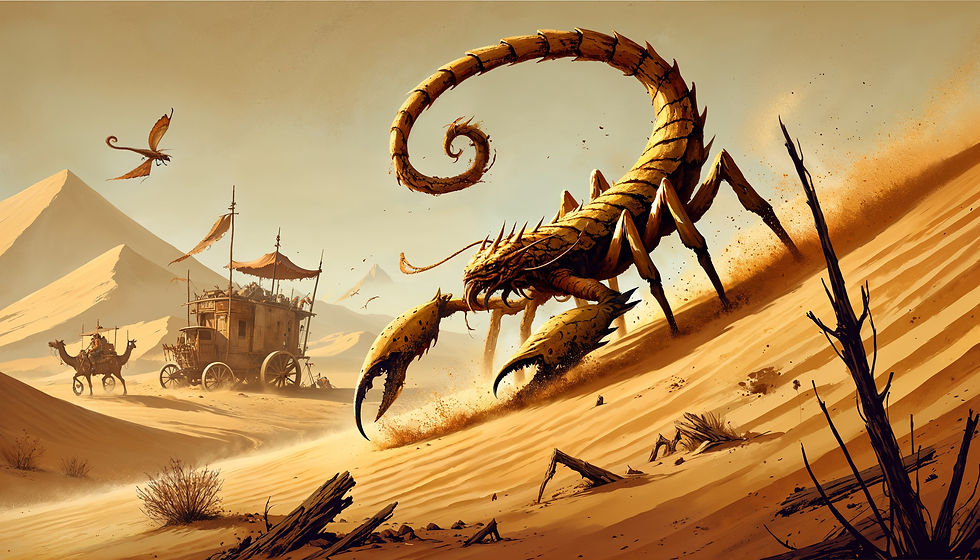From Page to Table: Adapting Mary Shelley’s Frankenstein for D&D
- Laurie

- Dec 12, 2024
- 2 min read
Updated: Dec 14, 2024
Developing Frankenstein’s Legacy meant crafting a journey that explores deep moral struggles and Gothic horror. The adventure challenges players to confront the consequences of creation, rejection, and unchecked ambition. Every decision they make becomes part of the story, inviting reflection on what it means to be a monster or a creator. For me, this was about building a living, breathing campaign that captures the soul of Shelley’s novel while immersing players in its emotional and ethical dilemmas.

Capturing the Gothic Atmosphere
The Alpine countryside in Frankenstein’s Legacy feels like a character itself, with mist-shrouded forests, treacherous paths, and eerie ruins. Descriptions of flickering lantern light, distant howls, and oppressive silence help build an atmosphere of dread. In one playtest, players noted how these elements immersed them in the setting, heightening the tension with every clue—a discarded locket, cryptic journal entries, or the faint sound of something unnatural. The ambiguity of what lurks in the shadows keeps players on edge, letting fear build steadily like an approaching storm.
Emphasizing Moral Dilemmas
Frankenstein’s Legacy centers on the consequences of choice. The creatures are not just enemies; they’re complex figures who challenge biases. For instance, Elara, a sentient creation seeking peace, forces players to question her motives. Decisions carry weight, such as protecting a creature from vengeful villagers and alienating the townsfolk or destroying the creature and leaving questions unanswered. These moments ensure that morality remains player-driven, prompting debates on redemption, monstrosity, and consequence.
Building Emotional Encounters
Every encounter in Frankenstein’s Legacy deepens the story. Tragic adversaries evoke empathy and force meaningful choices. One scene might involve a guardian construct protecting a childlike creation, challenging players to fight or communicate. NPCs evolve dynamically based on decisions—Greta, a kind innkeeper, may become conflicted if the players side with the creatures, while Father Anselm might soften his rigid faith or harden against the party’s actions. These relationships reflect the players’ impact on the world.
Weaving Themes into Gameplay
Themes of ambition and identity intertwine with gameplay. Players may uncover Victor Frankenstein’s journals, facing dilemmas about continuing his work. Roleplay scenarios challenge their perception of belonging, as the creatures’ integration into society hinges on player choices. The blend of science and magic shapes mechanics, requiring skill checks to decipher alchemical formulas or repair arcane devices. Items like the “Spark of Life”, capable of reviving creatures, carry practical and ethical consequences that heighten the stakes.
Mystery and Investigation Mechanics
Special mechanics support the adventure’s mystery elements. Players gather evidence through interviews, Insight and Investigation checks, and interpreting symbols. Tools like an evidence board—physical or digital—help connect clues, characters, and events. Some discoveries require solving puzzles or interacting with creatures, blending discovery with moral tension. Approaches vary; players may negotiate with a frightened villager for clues or intimidate them, with each path altering the story’s direction. Every step builds suspense as they piece together the truth.
Conclusion: A Story That Lingers
What makes Frankenstein’s Legacy unique is how it resonates long after the game ends. The Gothic atmosphere, moral questions, and emotional stakes transform a session into a profound experience. By weaving Shelley’s themes into gameplay, this adventure offers players an unforgettable journey that challenges them in ways they’ve never imagined.



Comments